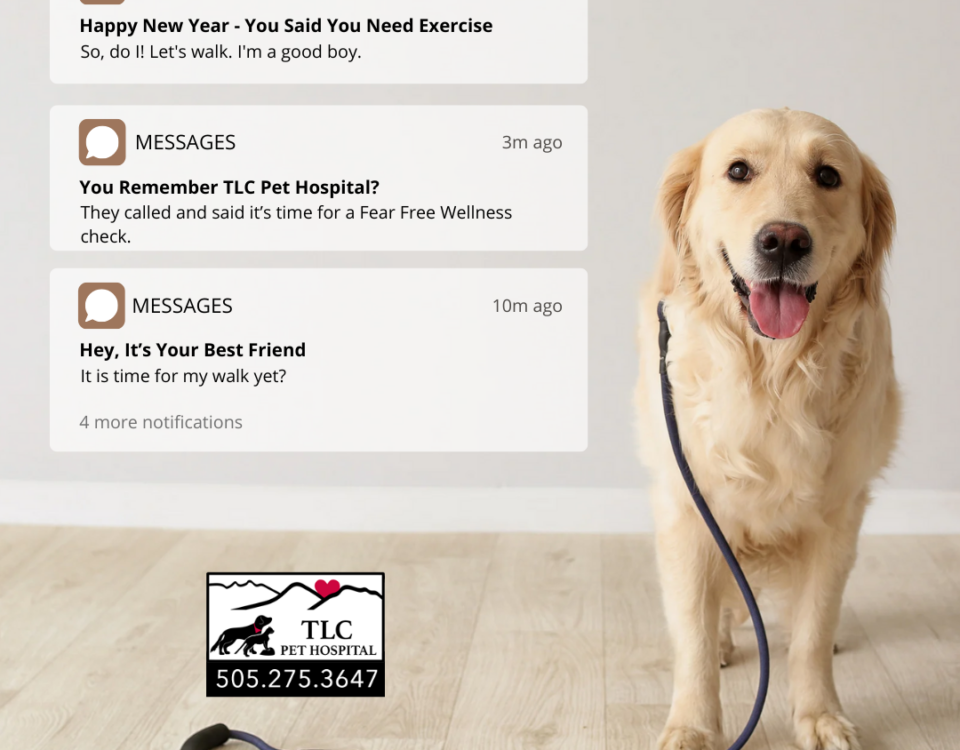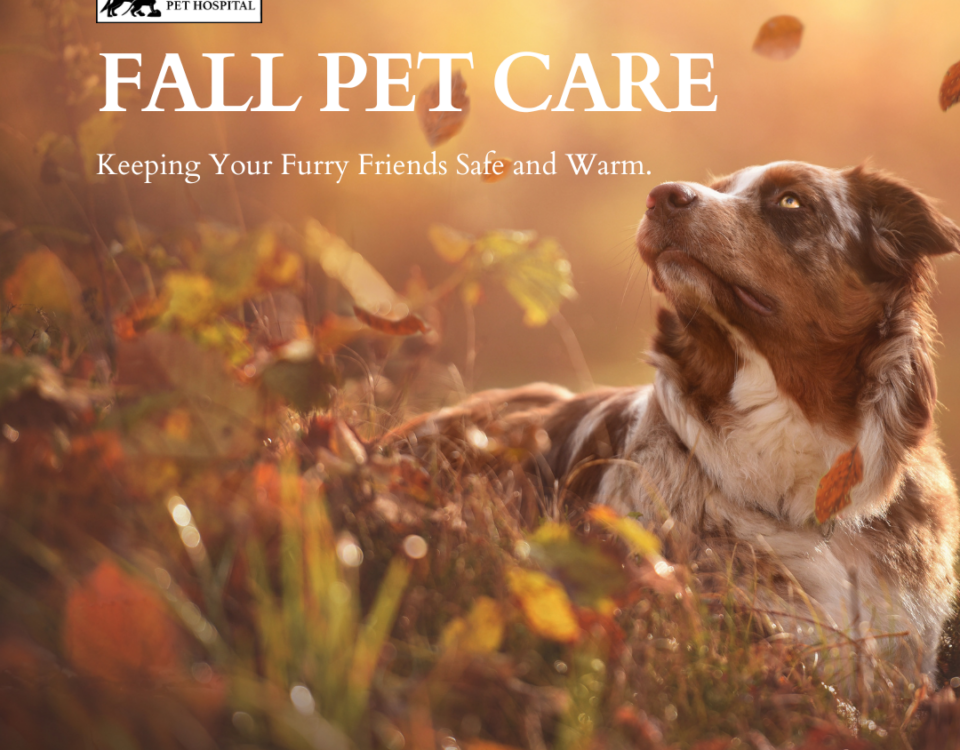Thanksgiving Dangers
November 15, 2013Looking For a New Dog?
November 22, 2013When you see Fluffy giving you a sad little look while standing next to the dinner table, you might be tempted to slip your furry pal a little taste of your food. Or perhaps you’ve been in the midst of preparing a large holiday meal and let your pet tend to the floor scraps. Beats sweeping, right?
Sharing food with your pet may seem relatively harmless, but outside of encouraging bad begging behaviors and possibly even weight gain (thanks to the extra calories), you could actually be putting your pet’s overall health and life at risk. There are a number of foods and ingredients consumed by humans every day, like chocolate, milk and garlic that can trigger serious toxic reactions in pets. We’ll take a closer look at the ones that can be most harmful to your four-legged friends. We’ll examine the signs of ingestion, the side effects, and what you should do in case of emergency. Let’s start with one that seems very harmless: milk.
10: Milk and other dairy products
The image of a cat lapping at a saucer of milk is certainly a familiar one, but in reality, that bowl can spell trouble. While a glass of cold milk can do your body good, the same can’t be said for your pets. Neither cats nor dogs come equipped with systems that inherently carry enough lactase (the enzyme that helps break down lactose). As a result, introducing cow’s milk or milk-based products like ice cream into their diets can lead to digestive issues including upset stomach and diarrhea, or even food allergies. Follow the advice of organizations such as the Humane Society of the United States and keep your pet on a lactose-free path. Or seek out commercially prepared milk substitutes created especially for cats, which can be found at your local pet shop.
9: Raw Meat & Meat Bones
If you’re inspired by the nursery rhyme “This Old Man” and tempted to “give a dog a bone,” be cautious about what you’re giving to Rover. While the idea of a pup gnawing on a bone might seem like second nature, you could be introducing a health risk by handing one over. It could splinter and cause choking, intestinal blockage, or tears in your dog’s digestive tract. Nevertheless, the act of chewing a bone does help with dental issues by scraping off plaque and stimulating gums, which help control bad breath. However, it’s safer to purchase nylon-based or pressed rawhide bones for these purposes.
Raw meat can present challenges as well, in terms of transmitting bacteria like E. coli that can be harmful to pets and disturb your pet’s digestive system. Avoid sharing any uncooked beef, poultry, or fish, and keep any items you’re defrosting for dinner well out of reach.
8: Onions and Garlic
Several common seasonings, including onions, garlic and chives, can create problems for your pets by triggering irritation in their gastrointestinal tract, possibly leading to serious red blood cell damage, asthma attacks, and even liver damage. Immediate signs of ingestion include vomiting, diarrhea, discolored urine and lethargy. Reactions seem to be more prominent among cats than dogs, though both have been known to react when exposed to raw, cooked or dehydrated varieties of these ingredients. While cats and dogs aren’t particularly attracted to the smell of onions or garlic, these items are so present in cooked food, we must remember not to give our pets meat that has been sautéed or garnished with these seasonings.
7: Avocado
Could guacamole be deadly? Perhaps, if your pet gets hold of some! Avocados contain an element known as persin in their leaves, fruit, seeds, and even bark. Persin is incredibly toxic to most animals, including dogs, cats, horses, birds and rodents. Its presence in animals leads to difficulty in breathing, severe congestion, inflammation of the mammary glands, accumulation of fluid around the heart and even death. Just a small amount can cause massive vomiting and diarrhea in dogs and cats, so keep the avocados out of reach. If you suspect your pet has ingested some, play it safe and get to your vet as soon as possible.
6: Alcohol
There’s a saying that goes: Beer before liquor, never sicker; liquor before beer, never fear. That might be fine for people, but for animals, beer, wine or liquor are all hazardous.
You might think it funny to see what would happen if you let Fido have some beer, but your canine companion would likely be saddled with a laundry list of side effects. These include vomiting, diarrhea, depression of the central nervous system, coordination problems, breathing issues and tremors. In extreme cases, your pet could fall into a coma or die. The level of the poisoning usually depends on the amount of alcohol consumed as well as the pet’s weight, but bottom line is, there’s nothing funny about putting a cocktail within your pet’s reach. And if your pet does ingest some liquor, don’t just let it “sleep it off.” Call your vet for advice.
5: Caffeine and Chocolate
If your dog seems a bit lethargic and you think a cup of coffee might help, think again. Caffeine is harmful to animals due to the presence of methylxanthines, chemicals which can be found not just in coffee, but also in tea, colas, energy drinks, and even pain killers and diet pills. Ingestion can trigger vomiting, diarrhea, hyperactivity, panting, increased thirst and urination, but also more serious symptoms such as tremors, abnormal heart rhythms and death.
Chocolate also contains lower amounts of methylxanthine. Levels vary, depending on the type. However, chocolate serves as a double whammy of sorts to pets, as it also contains theobromine, another potentially toxic element that can trigger reactions like restlessness, vomiting and muscle spasms. Just four to 10 ounces (113 to 283 grams) of milk chocolate could be lethal to smaller dogs. Unsweetened baking chocolate and dark chocolate contain the highest amounts of theobromine, while white chocolate has the lowest. That said, it’s best to keep all types of chocolate out of reach.
4: Grapes, Raisins and Currants
Though grapes and raisins offer nutritional benefits for humans, it’s imperative to keep them out of your pet’s reach. While the toxic element within grapes and raisins hasn’t been pinpointed, the impact on pets that ingest them has been well-documented, and ranges from hyperactivity and repeated vomiting to lethargy, depression, kidney failure or even loss of life. In addition to keeping grapes and raisins from your pet, you also need to keep away products such as fruit salads, cereals, granola bars, and raisin cookies.
You can serve your pet fresh fruits such as slices of apples, pears, oranges, bananas, and seedless watermelon. However, steer clear of fruits with pits such as peaches, as they can become lodged in your pet’s throat. Peach and plum seeds also contain trace doses of cyanide, which can prove fatal to cats and smaller dogs. (It’s not good for humans either but humans know not to eat the seed!)
3: Yeast Dough
Bakers, beware: If your dog or cat gets its paws (or rather, mouth) on some yeast dough, the consequences can be great discomfort at the very least, if not a more tragic outcome. Yeast dough can expand in your pet’s stomach, leading to increased gas production in its digestive system. This could trigger rupturing of the stomach or intestines. Symptoms include vomiting, abdominal discomfort and bloat.
Bread presents less of a risk as the yeast has already risen, but even so, the ASPCA says “bread-based” treats shouldn’t exceed more than 5 to 10 percent of a pet’s overall caloric intake. It’s better to get your pet a “pupcake” from a dog bakery.
2: Macadamia Nuts
Macadamia nuts might make a great souvenir from a Hawaiian vacation, but it’s a treat that can prove fatal for your pet, whether eaten raw or roasted. If you have a weak spot for macadamia nuts, make sure to keep the jar tightly closed and out of your pet’s reach at all times. As few as six nuts can be enough to initiate a reaction, which includes vomiting, tremors, weakness, and depression. The symptoms usually start within a half-day after ingesting and last about 12 to 48 hours. Reactions can worsen to include paralysis of the hindquarters and hyperthermia, so if you suspect your pet has nibbled on these nuts, contact your vet immediately.
1: Xylitol
The word “Xylitol” might not mean much to you, but it’s an artificial sweetener used in any number of products you likely have lying around your house or in your purse or pocket. These include some candies, gum, most diet products such as sugar-free cookies, and even certain types of toothpaste. It doesn’t take much of it to trigger a reaction in your pet — and the symptoms can come on quickly and are often fatal.
Xylitol causes insulin release in most animals, which leads to hypoglycemia (or lowered blood sugar levels). Signs of ingestion include vomiting, coordination problems and lethargy. These symptoms can progress to seizures and even liver failure within just a few days. Avoid setting out candy dishes in your home and keep an extra-vigilant eye on your pet during holidays such as Halloween and Easter, when sweet treats are even more likely to be around.



